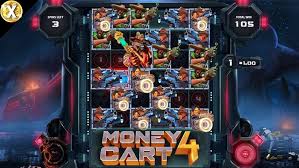
Why the Center Spot is the Secret Weapon in Football Tactics
The center spot, often underestimated, is the heartbeat of football strategy. Positioned at the heart of the pitch, it serves as the launch point for both offensive and defensive plays that can shift the course of the game. From controlling tempo to influencing match dynamics, the center spot is a tactical asset for those who know how to leverage it. By understanding its potential, players can unlock its power to dominate the field—much like the strategic approach found in games at 123B.
The Role of the Center Spot in Football Tactics
The tactical implications of the center spot extend far beyond its simple physical presence. Understanding how to maximize its potential is key to implementing effective game strategies. Let’s explore how the center spot influences kick-offs, game control, and various tactical approaches.
The Center Spot and the Kick-off
One of the most fundamental uses of the center spot occurs during kick-offs. Whether at the beginning of each half or after a goal has been scored, the way a team utilizes this opportunity can significantly impact the flow of the game.
During a kick-off, teams have several options. They can pass the ball directly to a teammate, create space for a quick attack, or even attempt a long ball over the top. More often than not, teams employ specific routines designed to exploit weaknesses in the opponent’s formation.
For example, some teams may choose to execute a short pass to maintain possession while others might initiate a direct attack, seeking to catch defenders unaware. These strategies require precise timing and coordination among players, highlighting the tactical depth associated with the center spot.
Moreover, teams that successfully control the ball immediately after a kick-off can build momentum, allowing them to dictate the pace of the game. The center spot becomes the catalyst for establishing dominance, showcasing how initial decisions can reverberate throughout the match.
The Influence of the Center Spot in Controlling the Game
Controlling the center spot translates to controlling the game. The midfielders often play a crucial role in this regard, as they frequently gravitate towards the center spot to receive passes, facilitate play, and link defense with attack.
Midfielders who excel at using the center spot can dictate the tempo of the match. They can slow down play when needed, allowing for strategic buildup, or accelerate the game to exploit defensive gaps. Being in close proximity to the center spot gives them the freedom to make quick decisions that can turn the game on its head.
Additionally, teams that dominate the center spot typically enjoy greater possession of the ball. This superiority facilitates increased passing opportunities, enabling them to stretch the opposition’s defense and create openings for attackers. Effective ball movement originating from the center spot can prove devastating if executed correctly, underlining its importance in tactical play.
Football Tactics Revolving Around the Center Spot
Various football tactics are intricately linked to the center spot. Coaches develop specific formations and strategies that revolve around controlling this area, utilizing it as a springboard for attacking maneuvers or defensive setups.
A classic example of a tactic revolving around the center spot is the “false nine” system. In this approach, a central forward drops deep into midfield, drawing defenders away from their positions. The ensuing vacuum allows other players to exploit the spaces created, often leading to confusion and disorganization within the opposition’s backline.
In contrast, a more traditional 4-4-2 formation emphasizes maintaining width and compactness. In such systems, the center spot becomes a battleground where midfielders engage in fierce duels, fighting to win possession. This focus on the center spot intensifies the competition for control, making it a critical component of successful play.
Ultimately, the tactics surrounding the center spot reflect a coach’s philosophy and style of play. Whether emphasizing possession, pressing, or counter-attacking, the center spot remains central to the execution of those ideas, shaping the narrative of the match.



